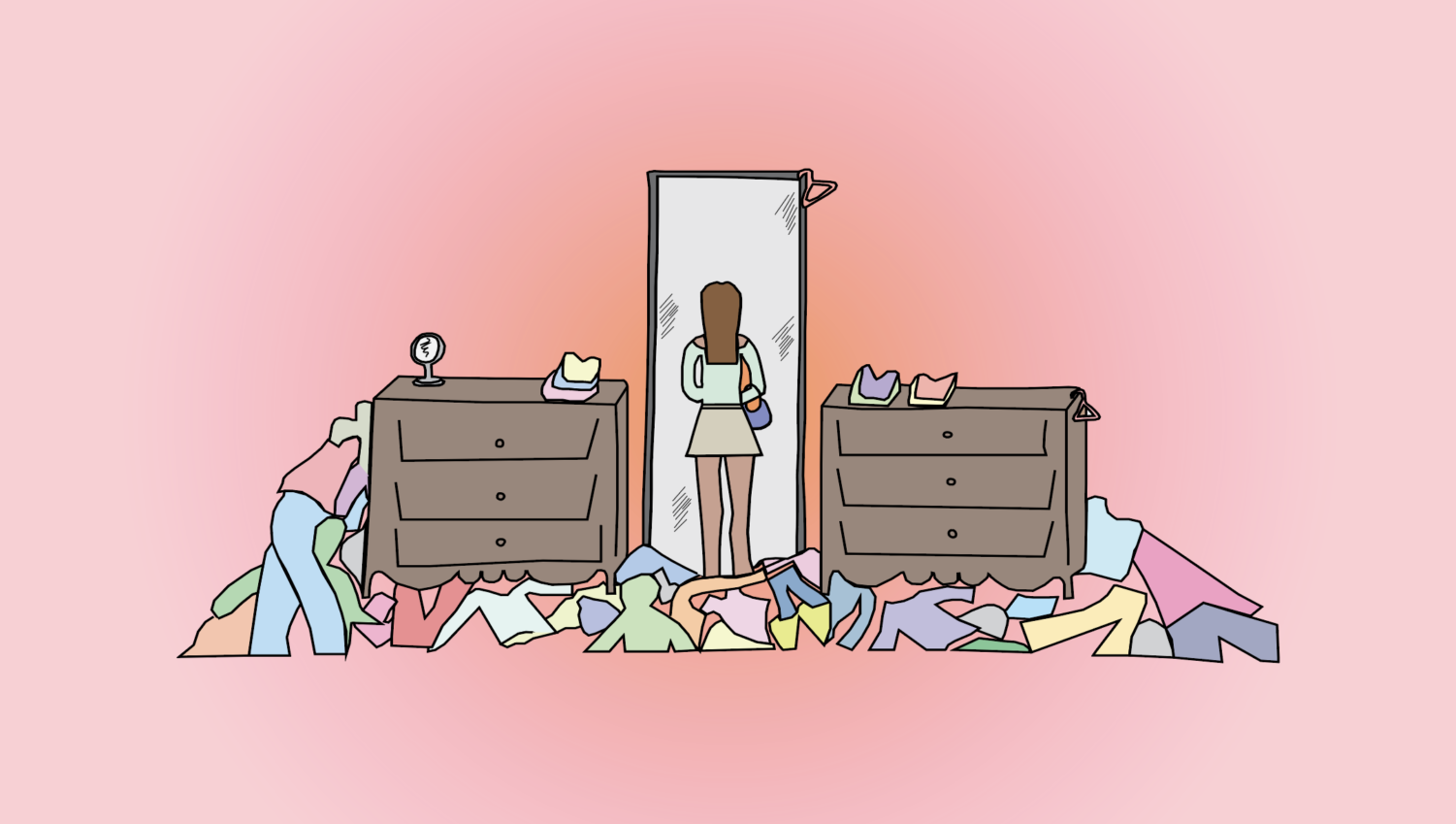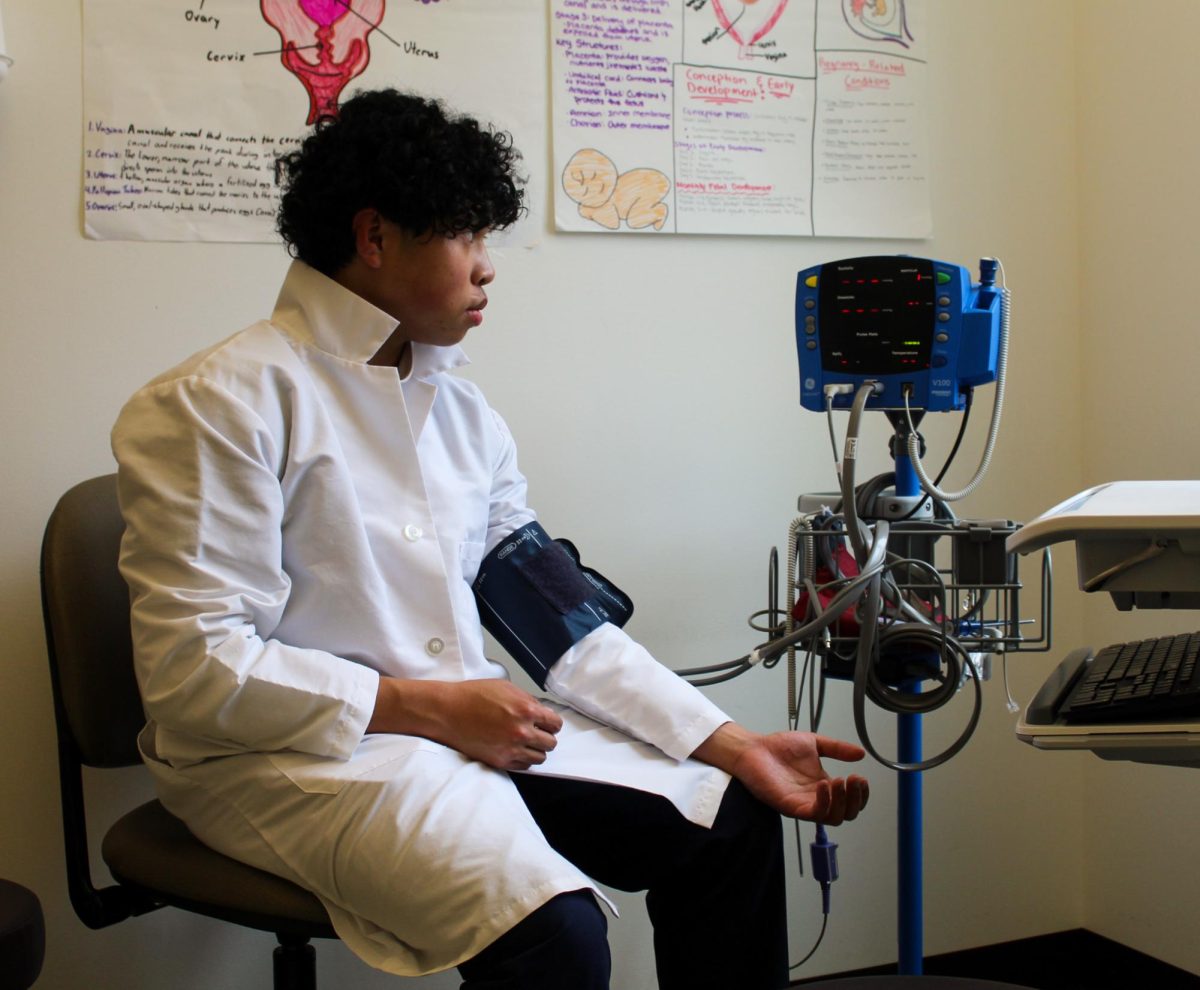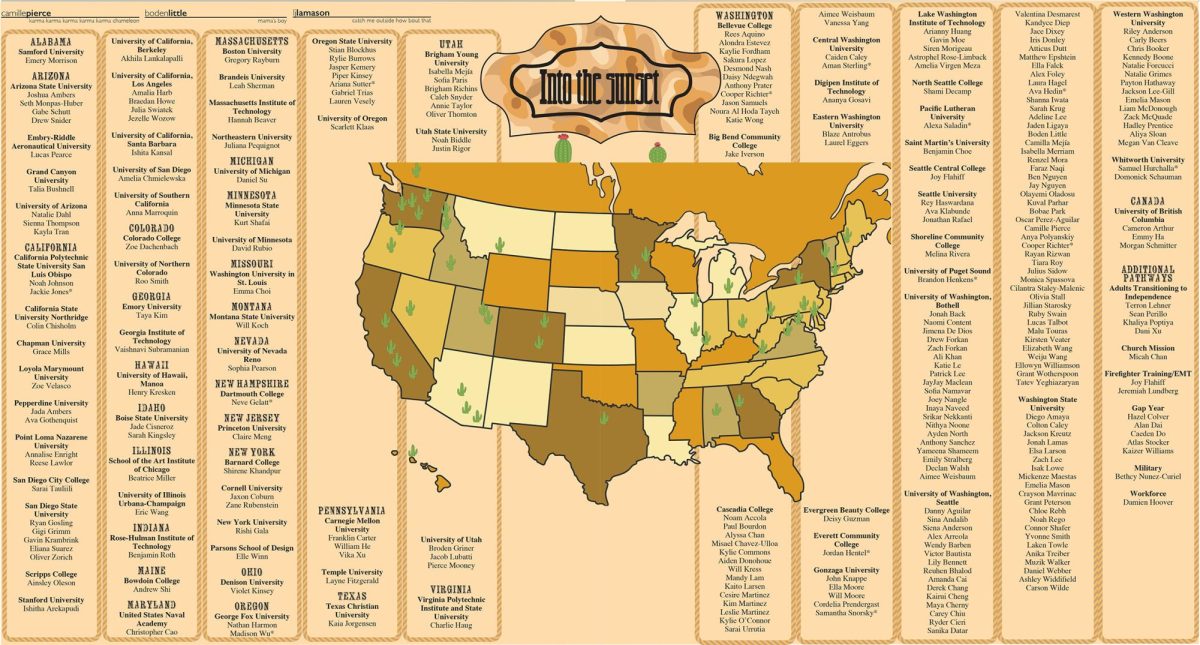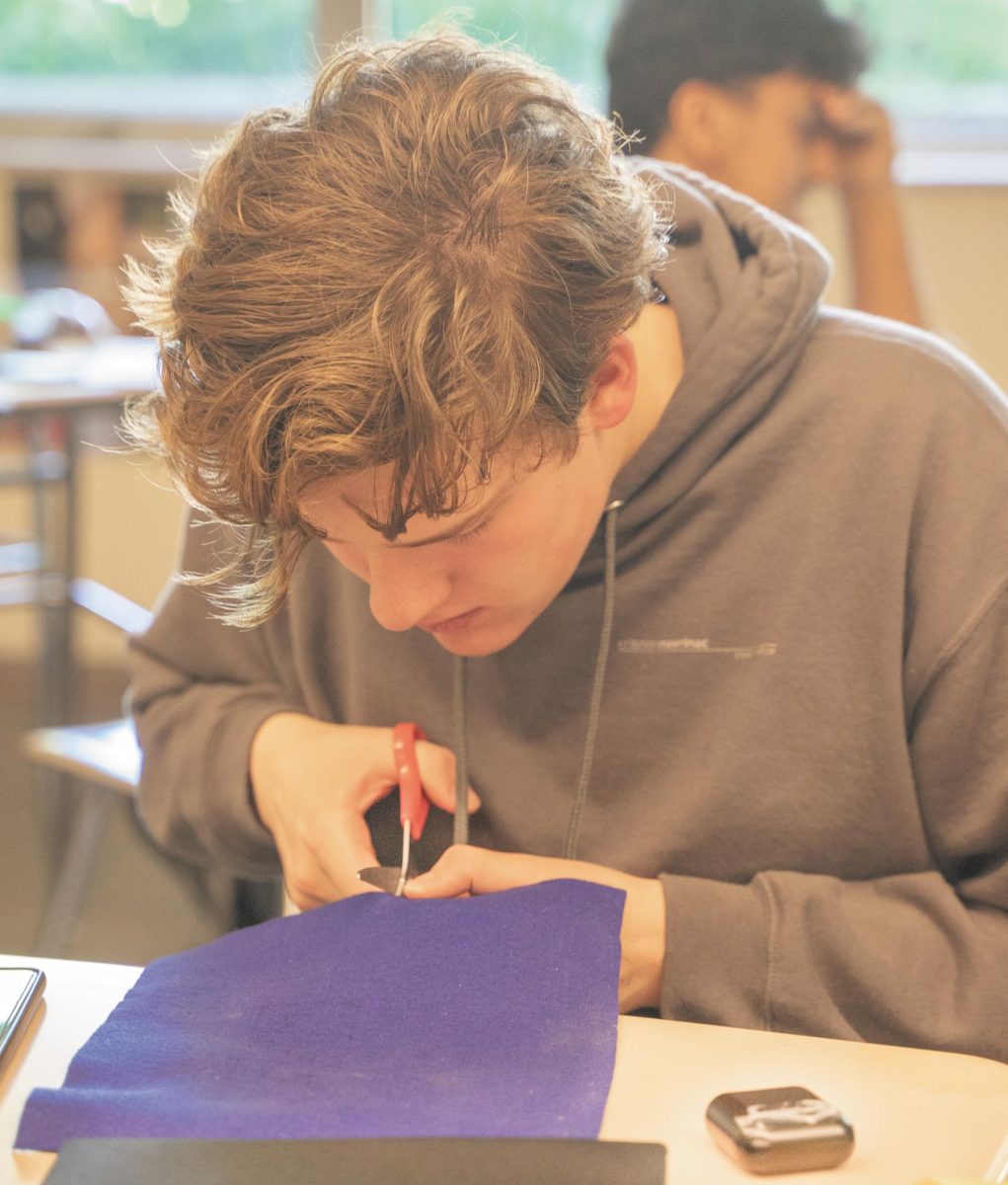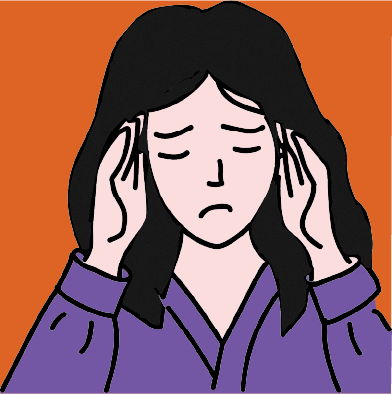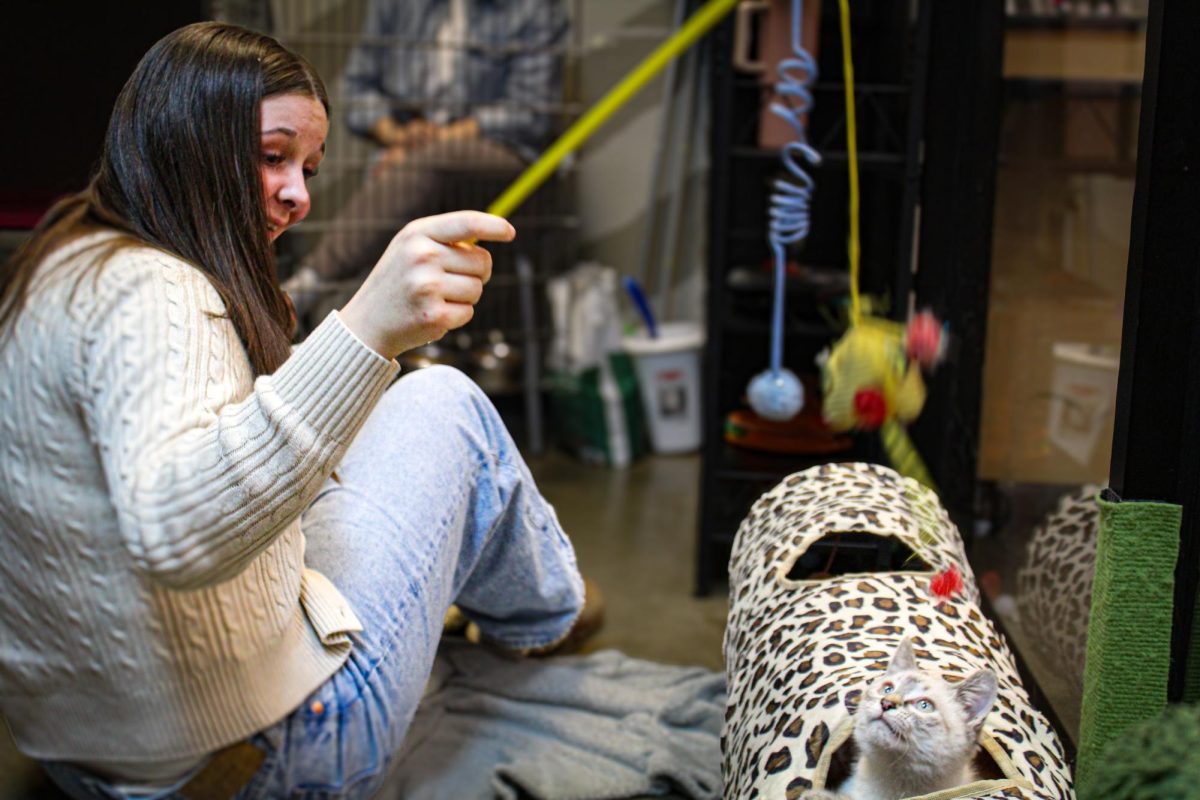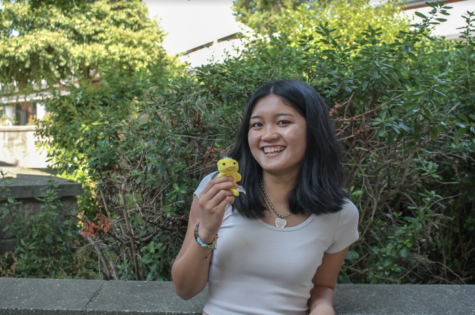Social Media Trends and Brand Deals
Fast fashion is a term used to describe the production of inexpensive clothing made to mirror recent trends. Fast fashion rapidly falls in and out of style and is made with low-quality materials and exploitative labor practices such as the use of sweatshops.
The presence of fast fashion, paired with social media’s influence on trends, adds to the pressure for teenagers to keep up with the current style. The effects of fast fashion are reflected in the mindset of high schoolers, where these expectations expand into almost every facet of a teenager’s life.
“I never really cared about how I dressed until I got to high school. I don’t think it ever had really been at the center of my mind,” said junior Meg McCormick (they/she). “I think that social media really, really pushes on you, especially as a high schooler surrounded by people your age who are trying also to impress people by how they dress. I think that it’s really unsustainable.”
The unethical conditions of fast fashion clothing production have become more recognized by the public. Despite this, many teenagers continue to buy fast fashion due to convenience. Senior Kaitlyn Han (she/her) said that this attitude is normal for many teenagers. She said that for many teens, the benefits of having good style for a cheap price outweigh any negatives.
“Even though people are aware of how bad the conditions surrounding it [are] and how bad it is for our environment and for people, they neglect it because it’s convenient for them, because the price is convenient for them,” said Han.
The brief life of fashion trends has become a controversial mainstream topic, especially on social media. Trends pass quickly, making it difficult for the consumer to keep up and continue wearing clothing that hasn’t gone out of style. As one trend comes down, another is already on the rise and will quickly be replaced. Senior Lilly Allen-Mendoza (she/her) said teenagers shouldn’t be blamed because brands target young people specifically. She said she sees her friends buying from fast fashion brands without researching them and realizing that they are harmful. However, other students feel differently about the role teenagers play in the fast fashion industry.
“We are definitely to blame. We’re aware enough, or we’re old enough to be aware. We know what we’re buying, especially because of social media,” said senior Roan Howard (he/him).
A way for many teenagers to keep up with fashion trends is social media, where anyone can easily find influencers with styles they like. Many fashion labels form brand deals with influencers to send out clothes to them so they can advertise these products on their platform. When the clothes are sent out on a brand deal, there is an agreed-upon exchange of promotion on the influencer’s platform for some form of payment from the brand. This is different from PR deals, where brands send influencers clothing for free and do not require any terms of exposure. Due to Han’s large social media following, she is paid to promote the clothing she chooses and always receives some sort of payment. Han said that PR can be very beneficial for fashion brands.
“They’re getting these famous people to promote their clothing, which more people will buy, but I feel like the notion of sending someone who already has so many clothes and who is already so rich — sending them more free stuff is kind of unfair for other people,” said Han.
During PR deals, recipients don’t have a choice in the products they get from brands, and since the products are free, there is little consideration of the price and source of production of the clothing.
“Influencers can be good for style inspiration, but I think you still need to be careful because they have no perception of money or how much each item costs and they don’t really care,” said senior Lucy Kolde (she/her).
The consistent source of free clothing from brands allows influencers to contribute to the quick cycle of trends in fast fashion, even if they don’t continue to wear the pieces.
“It’s not always guaranteed that the influencer will share or will actually wear the clothing, and so in that case, it’s just a waste of clothing,” said Han.
Planned obsolescence is a concept taken advantage of by brands to create cheap, trendy clothing that is designed to go out of style, allowing companies to manipulate trend cycles to generate more profit. Teenagers without disposable income can become the main targets because of the low cost of trendy clothes produced by fast fashion brands. Senior D’Aire Pham (they/them) said that they often get their clothes from fast fashion because they enjoy wearing new clothing that matches the current trends.
“I know I do partake in fast fashion just because it’s new. It’s trendy, and it feels really good to just wear all those kinds of clothes. It’s fun, but I know it’s pretty bad,” said Pham.
Not only are teens buying the clothes, they often don’t keep them for very long. Once it’s out of fashion, people choose to donate their clothes rather than continue to wear them.
“When I’m thrifting I’ll see something from Shein. And it’d be brand new, you can tell it’s never been worn. And it’s this is the result of fast fashion,” said Han.
Thrifting and Reselling
Thrift shopping is a more affordable and sustainable alternative to fast fashion, allowing shoppers to find quality clothing second-hand rather than newly manufactured. However, the benefits of thrifting are often offset by large amounts of clothing donations that overwhelm thrift stores and online clothing retailers, who increase the prices of clothing to make thrifting less convenient and less ethical.
Han said that the low cost of thrifting clothing compared to the cost of clothing from some of the first-hand stores she shops at is a large part of what makes thrifting so appealing. McCormick agreed, noting that they’re able to find unique pieces of clothing at the Goodwill Outlet bins, where the clothes are sold by the pound.
“If I’m at the Goodwill bins, and I find something crazy, that feeling is really cool because it’s such a unique experience, you think it’s only people online who can have it happen.”
However, second-hand clothing donated to thrift stores generally only stays on sale between the span of a month or a week. Excess clothing that isn’t sold often ends up in landfills or is sold overseas. According to the Environmental Protection Agency, roughly 700,000 tons of clothing are sent off to developing countries overseas, where a majority of it is dumped.
“I try to be cognizant of how much I donate to Goodwill because I think that there are a lot of issues behind that, but I give a lot of my clothes to my sisters,” said McCormick.
Reselling second-hand clothing is a popular alternative to donating old clothes. Online shopping platforms such as Depop, Grailed and Poshmark, where people buy and sell used clothes have grown in popularity. However, these sites are often exploited by people who buy and resell second-hand pieces with the intent of generating a profit, challenging the sustainability of thrifting because of shipping processes as well as the ethicality of thrifting.
“It’s almost hypocritical — a lot of the ways that reselling people will work — because they’re shipping it out in means that are really unethical and really unsustainable, but then will promote sustainability on their pages because they’re thrifting it,” explained McCormick.
The access to affordable and stylish clothing that online shopping provides promotes overconsumption and shopping addictions. Kolde said she has a shopping addiction, a habit that is encouraged by online shopping. Wearing clothes for longer can help consumers get the most out of their wardrobe and cut back on purchasing new clothing. The practice of mending or altering fabrics can also extend or expand someone’s closet.
“My last project was a blue and plaid bedsheet that had a ruffle on it, and I turned it into a Dorothy dress,” said Allen-Mendoza.
Han picked up sewing to alter and upcycle her clothes, allowing her to customize and get the most use out of each piece.
“I taught myself how to use a sewing machine during quarantine. There’s this New York shirt made completely from scratch,” said Han. “I tailor my Brandy pants all the time, because sometimes they’re too long or the butt is saggy. I like to make baby tees out of big shirts.”
Overall, thrifting bridges the gap between finding unique pieces of clothing and affordable prices. Although thrifting offers a more sustainable solution to shopping, buying clothing less frequently can help teenagers to reduce their carbon footprint.
“I think [thrifting is] part of an answer. I don’t think it by itself can end fast fashion because that has a lot to do with social media and fast trends, but I definitely think it helps to reuse clothing, especially because most clothing can be worn for more than a couple of years,” said Kolde.
Environment and Ethics
The fast fashion industry is detrimental to the environment. The production, consumption, shipping, prices and labor involved in the fast fashion industry are harmful to the environment and to people working in the industry. According to the Environmental Protection Agency, Americans throw away 16 million tons of clothing waste every year, accounting for 6% of all garbage.
“Lots of pollutants are used in the production of these materials and in the distribution, but also, once these items of fast fashion are worn, they are often very quickly thrown away, where they end up in landfills. They’re often made of synthetic materials, meaning they don’t break down very readily, and they often release harmful chemicals into the soil,” said Earth Corps president Josephine Anderson (she/her).
It takes immense amounts of carbon for textile companies to mass-produce clothing. Fast fashion companies also have a massive water footprint that’s counterproductive to the sustainability push. Although there are alternatives to buying from fast fashion brands, such as thrifting or buying from sustainable brands, it can be hard to determine which option is best.
“In a way, we’re all participating in fast fashion regardless of how much we don’t want to — I think even inevitably, like, the shoes I’m wearing are from Adidas, the same way you’re wearing Converse or something like that. It’s really hard to do,” said McCormick.
Along with being bad for the environment, fast fashion involves harsh working conditions and low wages for workers. Although fast fashion employs over 300 million people worldwide, clothing factories are often run down and lack safe working environments. In 2016, H&M was exposed for using child labor in Myanmar, where children were forced to work over 12-hour days. Pham said they feel guilty buying from fast fashion because it creates a greater demand for these positions.
“We don’t see what happens to these workers. We only see it online unless you go [to these factories]. That’s why I think for me, and for everyone else who loves fashion as well, it’s hard to cut back.”
Anderson said one thing to be aware of when navigating which brands to trust is greenwashing. Greenwashing is when a brand markets itself as environmentally friendly, but the information they provide is false or misleading.


